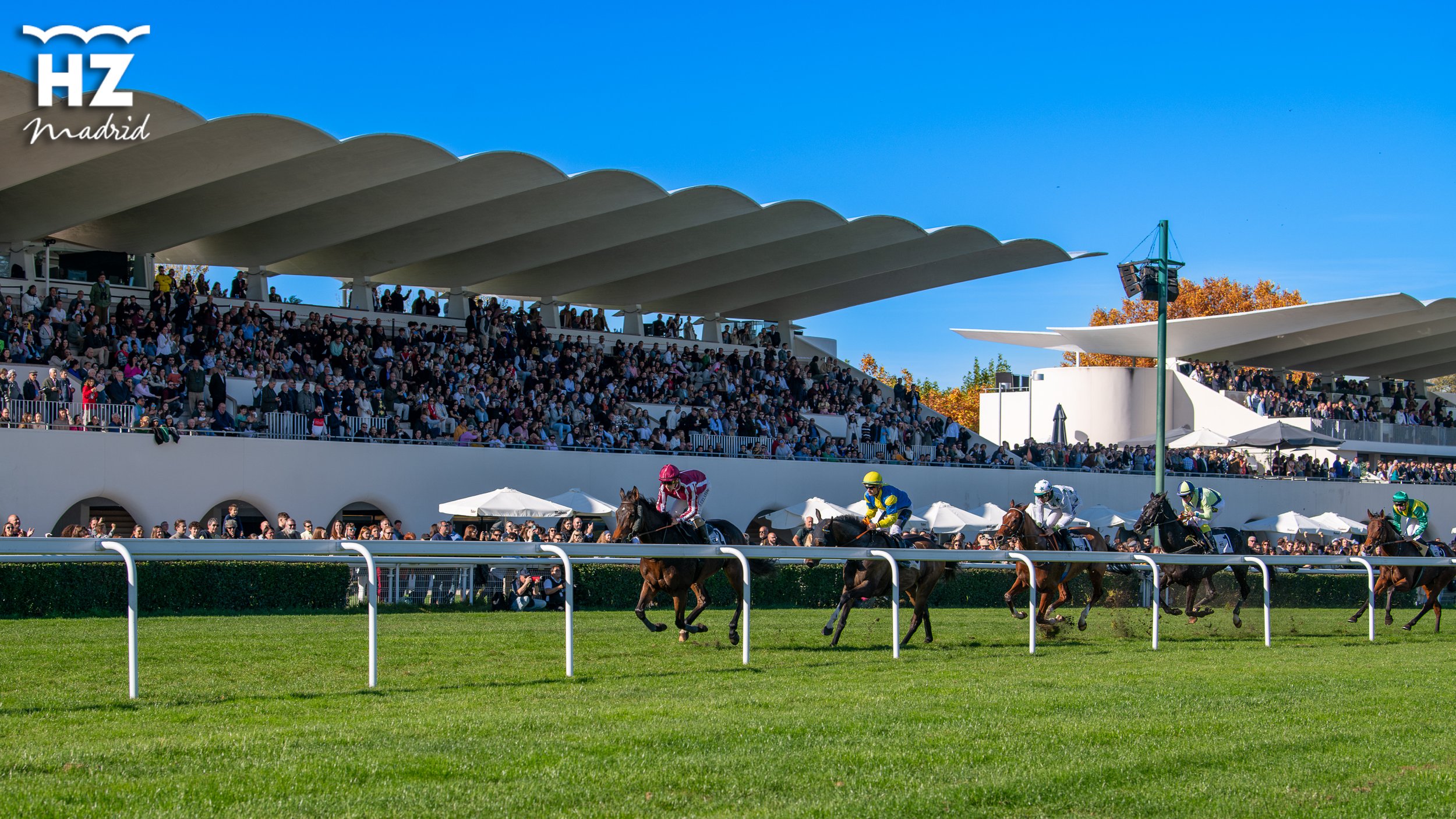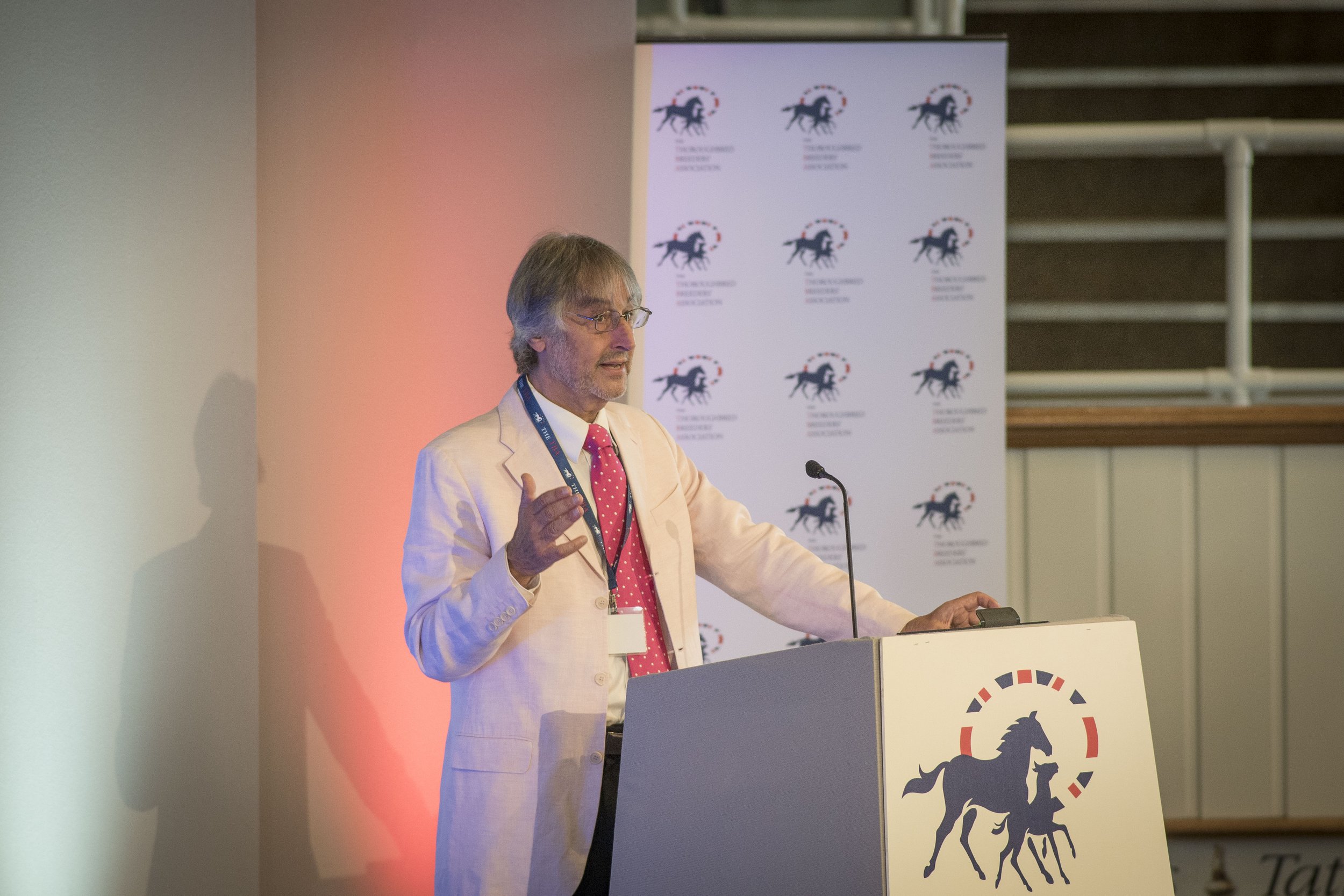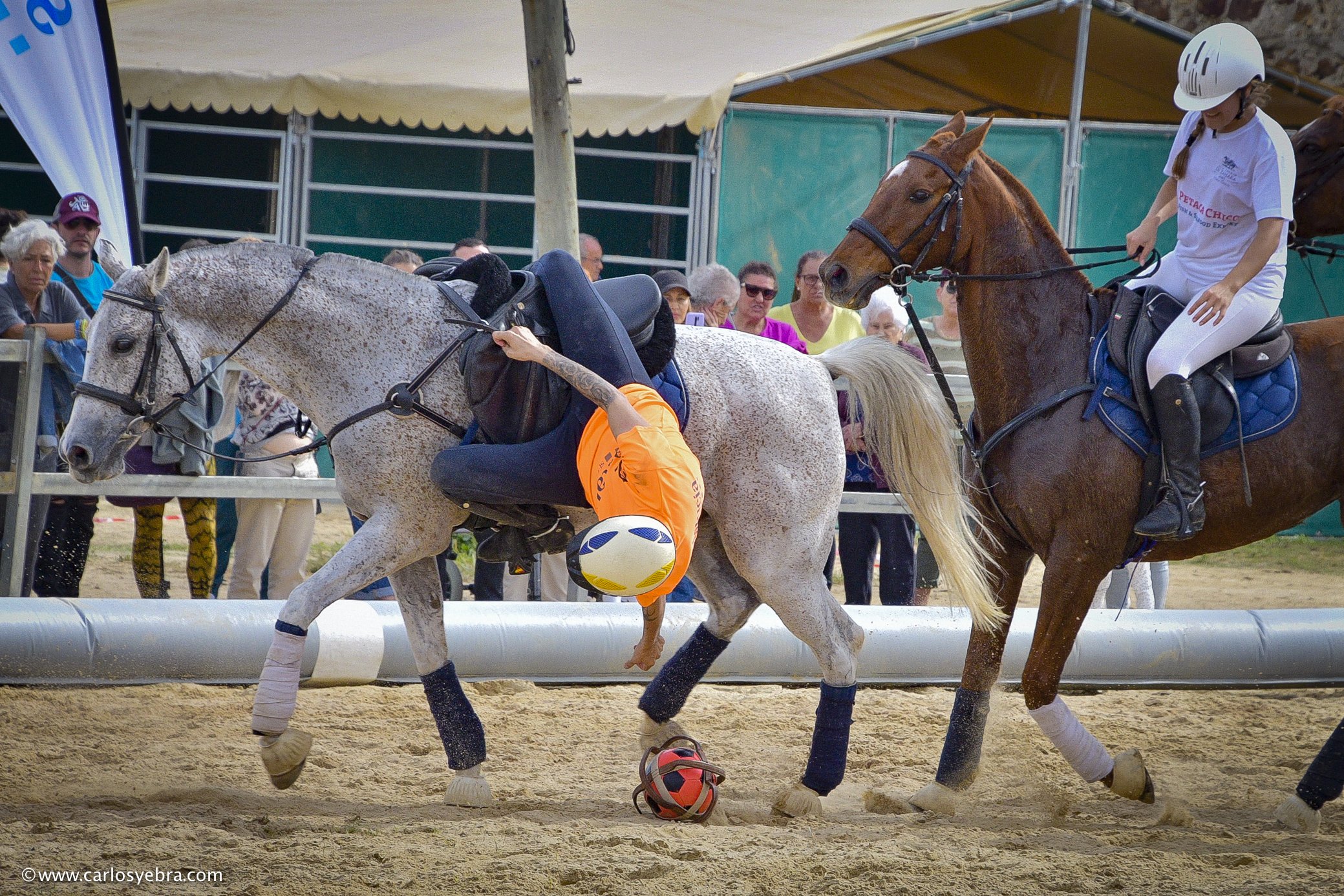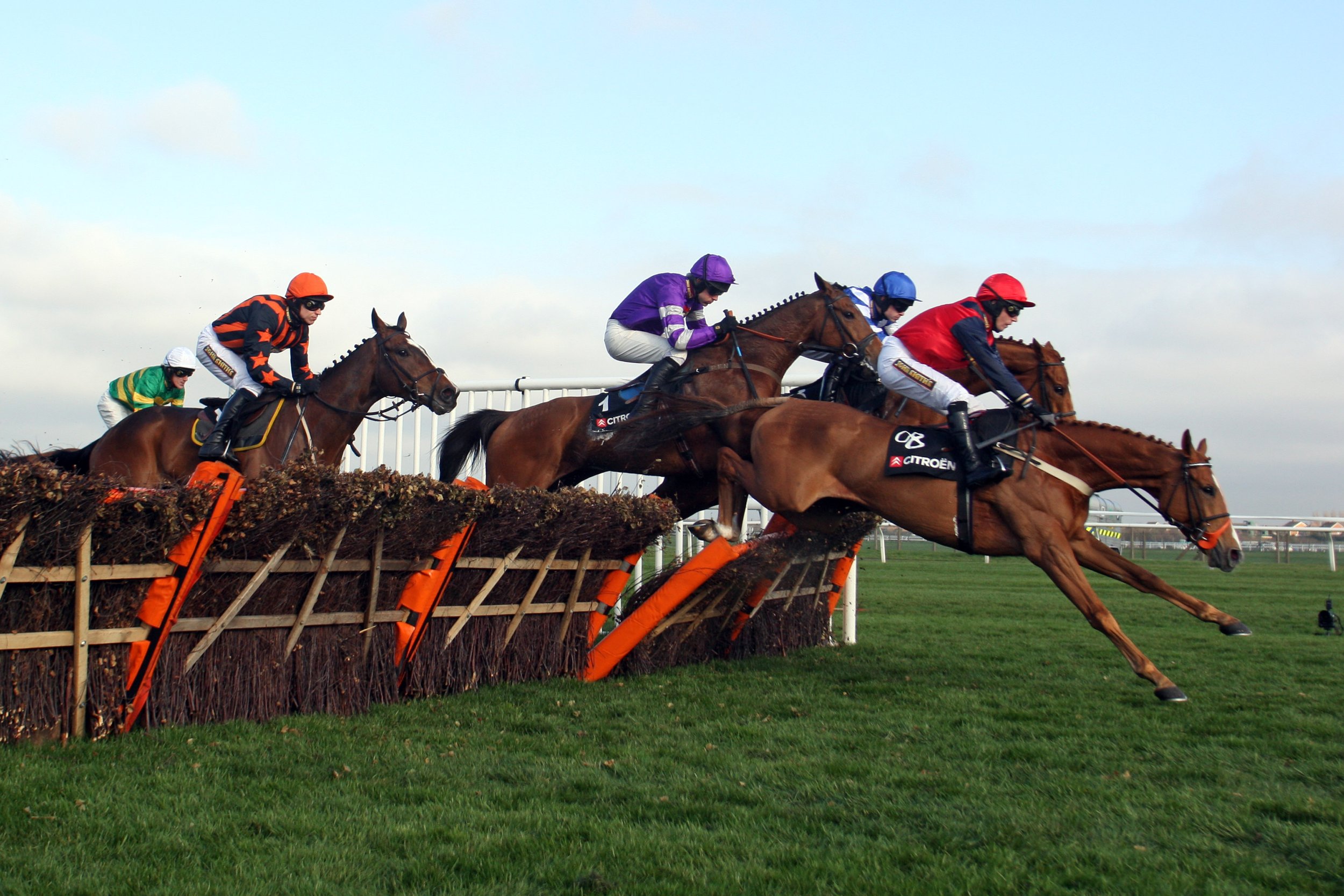Updates from the EMHF and we learn about Europe's latest beach racecourse - Zahara de los Atunes
Article by Paull Khan
The European and Mediterranean Horseracing Federation first started providing regular articles for European Trainer back in 2016. I thought, after eight years, it was time to have a look ‘under the bonnet’ of the federation, to see how it works.
EXECUTIVE COUNCIL MEETING, MADRID, SPAIN OCTOBER 14th
The Executive Council of the EMHF comprises nine members, elected by our General Assembly from among its members. The ‘ExCo’ sets the policy tone of the federation, agrees its budget and what the membership fees should be, etc. ExCo members elect, from amongst their own number, the EMHF’s Chair and its three Vice-Chairs.
Brian Kavanagh, now CEO of The Curragh Racecourse and formerly CEO of Horse Racing Ireland, has held the position of EMHF Chair since its inception, in 2010. Brian has indicated that he will stand down at the end of his current term, in mid-2025.
Your correspondent has served as the EMHF’s Secretary-General since 2012. There are no employees, although we do receive valuable help from Horse Racing Ireland, which provides resources for invoicing and handling the Federation’s finances.
Our Vice-Chairs are Rudiger Schmanns, Racing Director at Deutsche Galopp, representing EU countries, Julie Harrington, CEO at the British Horseracing Authority, representing non-EU European countries and Omar Skalli, serving for Mediterranean and Other countries. Rudiger and Omar are, like Brian, founding members of the ExCo.
The other members of the ExCo represent France (Henri Pouret), Poland (Jakub Kasprzak), Norway (Liv Kristiansen), Spain (Paulino Ojanguren Saez) and the Channel Islands, whose Jonathan Perree, in May, became the only person to be re-elected back on to the council, having also served between 2016 and 2019. Three countries – France, Great Britain and Ireland, enjoy automatic representation within ExCo. The other six ExCo places are filled by process of election.
ExCo deliberations span the full range of the responsibilities of our member Racing Authorities – governance, regulation, marketing, financial, legal, social, etc. Specific reports are received from the EMHF’s standing Political and Legislative Committee, together with the committees which sit within the EMHF umbrella – the European Pattern Committee (EPC) and European Horserace Scientific Liaison Committee (EHSLC). The EMHF has also created two special interest associations, the European Beach Racing Association and the European Pony Racing Association.
Much of the Political and Legislative Committee’s work concerns keeping alert to forthcoming legislation, whether within the EU or elsewhere, which may have a bearing on racing. Very often, this centres on the potential unintended consequences of changes which are being suggested with the best intentions. For example, animal health and welfare laws which are drafted with farm animals in mind and are not suited to horses. It was in this context that the EMHF led a delegation to Brussels in the summer, to impress upon policy-makers a number of potential pitfalls in the European Commission’s review of Welfare in Transport.
The European Pattern Committee’s work is not limited to deciding which races across Europe qualify as Group 1, 2, 3 or Listed. The EPC is constantly alive to trends, identifying any areas where the quality of European racing may be under threat or in decline – staying races, perhaps - and agreeing race planning policy initiatives designed to address these by influencing, over time, the behaviour of owners, breeders or trainers.
Doping and medication control sit at the core of the EHSLC’s remit, whether in the detection of substances prohibited at all times, or in the regulation of those therapeutic substances which need to be controlled. Alongside this, increasingly being raised are matters relating to horse welfare more widely and on which a pan-European response and approach is sought. The Chief Veterinary Officers of the major European Racing Authorities sit on the EHSLC and therefore steps are being taken to expand its brief to cover such issues.
At our most recent ExCo Meeting, which took place on October 14th in Madrid, we received a presentation on the report recently published by Horse Racing Ireland, in conjunction with Deloitte, ‘Social and Economic Impact on Irish Breeding and Racing, 2023’. As its title implied, this study took a broader view than the previous HRI/Deloitte report had done – not simply looking at economic factors, but also identifying the considerable and varied social benefits that racing brings, especially to those living in rural areas. This message had resonated strongly in Irish political circles and it was felt that this approach could profitably be replicated by other countries.
At each meeting, the ExCo agrees the shape of the EMHF’s educational programme over the coming twelve months. Last year featured two very successful events: an inaugural EuroMed Stewards’ Conference, hosted by the British Horseracing Authority, and a seminar on Racecourse Surface Management hosted by France Galop. It was decided to repeat the former in Copenhagen in June, where we will be holding our 2024 General Assembly, and to hold a seminar on Starting and Judging Procedures, led by the Irish Horseracing Regulatory Board.
The ExCo also seeks to identify which of the pressing issues facing racing could most usefully be focused on at our General Assembly. It was agreed that this year there should be sessions devoted to climate change and sustainability in relation to our sector, as well as the growing threat of illegal betting.
After the business was over, ExCo members were treated to a day’s racing at Spain’s premier track. La Zarzuela impressed on many levels. The luxuriant grass of the turf track belied the drought that had afflicted the region in recent months. The architecture of the gleaming white grandstand is striking, with its arched windows and billowing roof. The demographic was family-orientated, with little peacockery on show. Trees are plentiful, and the footprint of the track is such that there is space for a decent-sized crowd to spread out in the varied outdoor areas provided. And the top floor of the grandstand is now home to a series of airy hospitality areas, with comfy seating and a vibe which is less like a typical racecourse box and more akin to a chilled roof-top bar. All in all, a more than agreeable racing experience.
EUROPE’S YOUNGEST BEACH RACECOURSE: ZAHARA DE LOS ATUNES
The ExCo also receives reports from its two special interest associations, the European Pony Racing Association and the European Beach Racing Association (EBRA). But the latter’s annual meeting was held a couple of weeks after the ExCo – hence this separate bulletin.
The clue is in the name – Zahara de los Atunes is a small town dominated by a large fish! On hiring a car at Malaga airport, en route to this year’s annual EBRA meeting, the woman sorting the paperwork exclaimed jealousy: ‘Oh, you’re going to Zahara. You MUST try the red tuna!’.
‘Red tuna’ in this instance refers, somewhat confusingly, to the Atlantic Bluefin tuna – a prized goliath of the sea, averaging around 6.5 feet/2 metres in length and 550lbs / 250kgs in weight, whose lifespan, at 40 years, is greater than that of a racehorse. Born in the Mediterranean, they then venture out into the broad expanses of the Atlantic, before returning to breed. And, just as they sweep, as they must, through the narrow gap between ocean and sea - the Straits of Gibraltar – there, waiting for them, are the good fishermen of Zahara. They still employ the ancient and more eco-friendly ‘almadraba’ fishing technique, involving a complicated sequence of nets, strategically positioned, the gauge of which allows the younger fish to proceed, whilst trapping those of a certain size and maturity.
The influence and importance of the tuna to the town is all-pervasive. But, for one weekend of the year – the last weekend in October – the focus now moves from fish to thoroughbred. Because the vast strand which stretches both to the north and the south of the resort then becomes home to Europe’s newest official Beach Racecourse and to the staging of the Gran Premio de Zahara.
This is still a very young tradition, with nothing like the rich history of Zahara’s celebrated beach racing neighbour, Sanlúcar de Barrameda, which sits just 100 kms north up the Costa de la Luz, the other side of Cadiz. Sanlucar, which stages six days of racing and partying in the high summer, and which hosted the EBRA in 2019, is approaching its 180th anniversary, no less.
That year – 2019 – Zahara dipped its toe into the sea of beach racing, holding some unofficial exhibition races. But then COVID struck and three years passed before the first official races, (for thoroughbreds and held under the auspices of the Spanish Jockey Club), were run at Zahara. So, 2023 was, to all intents and purposes, ‘Year 2’ in an initiative – sponsored in part by Andalucia Tourism - designed to extend the tourist season, from its previous closure in early-October, for a few more precious and profitable weeks.
Progress over just these two years has been remarkable and testimony to its creator and driving force Pio Gonzales. It already has the feel of an embedded community event. Some 4,500 spectators lined the temporary barriers to watch the races, which were both live-streamed and covered by local television. “Beach Racing has been central to our success in keeping Zahara open for business for longer”, explains Gaspar Castro Valencia, Chair of the Zahara Beach Races Association. “We have just 1,300 inhabitants, but this year there were still 12,200 people here for the Gran Premio de Zahara weekend when, previously, the hotels and restaurants would have been closed. It has been an economic engine for the region. The presence of the European Beach Racing Association further helped to position Zahara, and Andalucia more widely, as an international tourist destination.”
The three thoroughbred races were interspersed with exhibition races, including one pony race for children, featuring a staggered starting-point based on the rider’s age. Two of the main races were over 1500m /7.5f, and the Gran Premio itself over 2000m /10f. Zahara is therefore noteworthy, among the world’s racecourses, in boasting - with Newmarket’s Rowley Mile – a straight 2000m / 10 furlongs! Starter numbers were modest, but included participants bred in France, Great Britain, Ireland and USA. The Gran Premio had the distinction of including Legionario (GB), a Listed Race winner in France the previous year, trained by the Duke of Alburquerque and coming to the sands off the back of a run in a €135K race at Meydan. The intention was to use Zahara as a stepping stone to the International races in Morocco the following month but, sadly, Legionario failed to fire in the race and the plan was abandoned.
Zahara – recently awarded the accolade as one of the ‘Magical Villages of Spain’ - was certainly a hit with the EBRA delegates. Apart from the tuna and the fish restaurants that abound, the village is famed for its live music, and the festival weekend has cleverly brought the jazz and racing worlds together. The Jazzahara Music Festival took place in an atmospheric al fresco setting, surrounded by the towering ancient walls of the Palacio de Pilas, former residence of the Dukes of Medina Sidonia which doubled up as a defence against pirates and a place in which to store the nets of the almadraba. And if your view of tuna is (as was mine) sullied by the canned variety, the Zaharan version is a culinary revelation! The number of different, sumptuous ways in which the fish was presented in the hospitality tents during racing was something to experience.
The additional equestrian attraction of a horse-ball tournament completed the entertainment. Horse-ball requires - of both the horses and their riders - extraordinary agility, and the Thoroughbred has proven wonderfully adept. Many of the horses on show were ex-racehorses, enjoying a second career.
The EBRA meeting received a presentation from Stefan Gast, creator of the vision of Pegasus Land - an ambitious new high-end, equine-focused development in Portugal. Part of that vision is to establish Beach Racing on the expansive and fashionable Comparta Beach, just south of Lisbon and the EBRA stands ready to give advice and share its members’ experiences and expertise.
It is to be hoped that Portugal will embrace the initiative. After all, in neighbouring Spain, Sanlucar and Zahara provide compelling evidence of beach racing’s enormous potential to enhance a coastal area’s touristic appeal and boost the local economy.
Look out for the dates of the 2024 European Beach Racing Fixture List, which will be displayed, when decided, at www.euromedracing.eu/beach-racing. Pop them in your diaries for a holiday or weekend away.
Juvenile Jumpers - Is there a place in Britain and Ireland for a juvenile hurdle programme?
Words - Lissa Oliver
The racing industry can often be accused of living in the past. Horsemen rely to an extent on the sharing of knowledge and experience handed down from one generation to the next, yet trainers in particular are keen to keep up with the latest trends and innovations in the hope they may improve the performance of their horses. While we thrive on tradition, we still constantly chase the next best thing.
Rooted more deeply in the past is National Hunt racing, which could be described as the more accessible side of our sport. Within the ranks of breeders, trainers and amateur jockeys are a great number of hobbyists, who like to do things themselves in the manner they have always done.
So it’s perhaps no surprise that we now delve back to 2013, a year in which we posed just about the same question we pose here: Should National Hunt store horses be broken at time of sale? It was a question then that had emerged out of borderline panic, as British and Irish-bred National Hunt horses struggled to compete against the French-breds. As with most panic attacks, we looked to the most immediate and obvious cause and set about addressing the situation with a campaign to supply ready-broken stores.
Speaking at the 2013 launch of an educational DVD on the breaking of store horses, Irish Thoroughbred Breeders Association Manager Shane O’Dwyer explained, “The view in National Hunt circles is that we need to change the way we do business, in that traditionally the store horse is broken at three and four, but the French system of breaking at two years appears to be a good alternative. The sales companies are pushing for horses to be broken by the autumn of their two-year-old career and then turned away to mature.”
That was 10 years ago. While the tide in results has since turned, the ideas put in place at the time have still yet to find favour. After a decade, 2022 sees the first National Hunt sale to cater for the new Junior Hurdle programme that will commence in Britain this autumn. Goffs UK August Sale at Doncaster in early August will feature a new National Hunt two-year-old session as part of the company’s support of the British Horseracing Authority (BHA) and Thoroughbred Breeders Association’s (TBA) National Hunt Junior Hurdle races.
The National Hunt two-year-old session at the sale will see all horses offered with pre-sale veterinary certificates, in the same way that stores are offered in the Doncaster Spring Sale, and the new National Hunt Junior Hurdle Races will be open exclusively to three-year-olds from October to December and four-year-olds from January to April.
However, if we look at the number of store horses offered broken over the past ten years, early breaking does not seem to have gained any popularity among breeders and consignors, despite drives by the TBA and ITBA. Nor does it have any obvious effect on sales.
Ten years ago, the three largest sales in Ireland and Britain in 2012 catalogued an average of 23% broken stores. 77.3% of the Land Rover Sale catalogue were unbroken, of which 74.4% were sold. 76.2% of horses listed as having been driven in long reins were sold; 71.4% of those listed as driven and backed were sold; and 70.3% of the broken horses found buyers.
Those 2012 figures were similar at Fairyhouse, where 77.8% of the Derby Sale catalogue were unbroken. Only 11 were listed as broken, but all 11 were sold. 79.5% of those driven and backed changed hands, and 80.3% of horses driven in long reins were sold. 83.3% of the unbroken horses found buyers.
Meanwhile, at the 2012 DBS Spring Sale, looking at the 208 stores catalogued on the final day, the picture was much the same. 62.5% were unbroken, of which 73.8% sold. 62.5% of the broken horses changed hands, 66.7% of the youngsters driven and backed were sold, and 72% of those long reined found homes.
A lot depends on the individual horse, and the sheer volume of unbroken horses limits the purchaser’s choice; but the comparative percentages show that having a horse prepared and even broken was certainly not a disadvantage, even then.
If we skip ahead to the current year, Goffs Land Rover Sale 2022 had 715 catalogued, of which only seven were broken, 0.98%. Tattersalls Derby Sale 2022 had 390 catalogued, four of which were broken, 1%. Goffs UK Spring Store Sale 2022 had six broken, from a catalogue of 313, 1.9%. That’s a total of just 1.2% of broken horses, quite a decrease from the 23% of broken stores on offer in 2012.
The French, of course, have a National Hunt programme designed to bring young horses to the track, with sales arising from racecourse performance rather than the ring. The Arqana Grand Steeple Sale 2022 had 38 catalogued, of which 19 raced over hurdles as three-year-olds (50%) and the remainder, bar four in training but unraced, ran on the Flat.
The French system of early racing experience is popular with trainers, who are trying to satisfy the demands of impatient owners who want to go straight from the sales to the racecourse. It’s also a system that benefits its young National Hunt horses, who have a programme in place allowing them to develop and gain experience on the track. Until this year, no such development programme existed for British and Irish horses.
Junior National Hunt Hurdles in Britain are open to horses that have not previously run before 1 October of that season, nor previously started in a Flat race or more than three hurdle races. Horses will be allowed to run in a maximum of four Junior National Hunt Hurdles, with a penalty structure for wins in previous hurdle races.
There will be 10 Junior National Hunt Hurdle races in the 2022/23 season open to three-year-olds and run between mid-October and the end of December, with a similar number for four-year-olds from January to the end of the season, all run at Classes 2 to 4 under WFA terms.
Wins by British-bred fillies nominated to the GBB (NH) scheme will generate bonuses just as they would for Novice Hurdles, which is £20,000 for GB-sired fillies winning fillies-only races and £10,000 for those winning any-sex races. Junior National Hunt Hurdle race winners will still be eligible to compete in Novice Hurdles during the following season, just as for National Hunt Flat races. It is hoped this will boost the sales of two-year-old National Hunt prospects.
“By adding these races to the programme, we’ll be able to gain a much better understanding of the impact of providing young jumping horses with the opportunity to start their careers at an earlier stage,” says Richard Wayman, Chief Operating Officer of the BHA. “Such an approach is already well established in France and to some extent as part of a vibrant Point-to-Point scene in Ireland, and we hope that owners and trainers will support the introduction of Junior National Hunt Development Hurdle Races and view them as an ideal opportunity for the right sort of jumping horse.”
Dr Bryan Mayoh, Chairman of the TBA NH Committee and co-breeder of black-type National Hunt winners, including Sizing John, told the National Trainers Federation, “This could be a long-term game changer for British Jump racing and breeding.”
He points out that “almost half of the horses gaining RPRs of 170 or more from 2009/10 onwards are French-breds” and argues the point, “top-class French-breds are far more likely to have run over obstacles at the age of three or by the middle of their four-year-old year. These horses had probably been schooled over hurdles several months earlier. The early racing of French-bred National Hunt horses, rather than any differences in pedigree, appears to be the single biggest factor generating the superior results of French-breds in recent years.”
Of course, it isn’t only the French-bred horses who benefit from early racing. Irish bred and trained horses are also now dominating the National Hunt scene, as their success at recent Cheltenham Festivals highlights. Once again, we could point to early racing as a probable reason for success, as so many Irish National Hunt horses have come from the Point-to-Point field. As trainer David Pipe tells us, “We do not get many orders for store horses, so tend to buy English or Irish Point-to-Pointers.”
Of the 30 races run at the 2022 Cheltenham Festival, 15 were won by Irish-breds, nine by French-breds and four by British-bred horses. Looking only at the 20 Graded races, only two of the winners ran as three-year-olds, both in France. Thirteen of the Graded winners debuted at four, five of them in Point-to-Points. Three didn’t start until the age of five, one as a six-year-old and one had run on the Flat at two.
The picture in 10 years’ time might be very different, with the trend in National Hunt horses debuting at four changing to a bulk of three-year-old appearances. But, overall, the knee-jerk reactions to stem the tide of rival breeding nations appear neither to have been embraced nor even to have affected the turnaround in results or the turnover at sales.
There is, however, another argument to early breaking and racing. Research by Ely, Avella, Price, Smith, Wood and Verheyen, published in the April 2009 Equine Veterinary Journal, found that ex-store horses were twice as likely to suffer tendon and suspensory ligament injuries as ex-Flat horses. The data collected from 1,223 horses based in 14 different British National Hunt training yards showed the recorded fracture incidence rate varied significantly by trainer, but not by gender or age.
The tendon and suspensory ligament incidence rate also varied significantly by trainer, as well as by age, but not by gender. The findings are clear: Early breaking and training halves the incidences of tendon and suspensory ligament problems.
It has been shown that short, controlled pieces of work at regular intervals, between recovery turnout, allow tendons and ligaments to grow and develop strength in harmony with bone growth. When a young National Hunt horse comes into training from a background of controlled exercise it is far less likely to suffer suspensory ligament problems, and its career is significantly prolonged as a consequence.
Grange Stud has been breaking its stores for the past 20 years and in terms of physical development, it makes logical sense. “It’s the same for any athlete, be they human or equine; the sooner you start skills training, the better it is for their careers,” points out bloodstock agent John O’Byrne. “Look at top professionals in any sport: they had a ball, club or racquet in their hands nearly before they could walk.”












